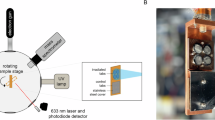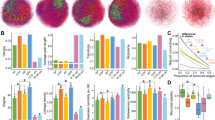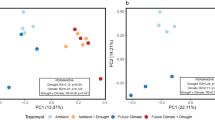Abstract
PREVIOUS experiments1,2, both with known organisms and unidentified aerobic organisms isolated as airborne contaminants, indicated that spore forming organisms did not readily grow or survive in vegetative form in freeze–thaw conditions. Severe freeze–thaw conditions are thought to exist on Mars and spore forming organisms are most likely to survive attempts at sterilization, and so we speculated that spores remaining on spacecraft which have been subjected to sterilization procedures would not grow on Mars even if nutrients and water were present. Detailed experimentation with several different strains of Bacillus subtilis variety niger, however, revealed that certain strains could grow, at least marginally, in freeze–thaw conditions (+25° −70° C) where thaw periods were as short as 5 h, and growth was good when thaw periods were longer. This result was obtained only when a particularly favourable medium, heart infusion broth, was used. Nevertheless, this indicated that spore formers could survive and grow vegetatively in freeze–thaw conditions, if provided with an otherwise sufficiently favourable environment.
This is a preview of subscription content, access via your institution
Access options
Subscribe to this journal
Receive 51 print issues and online access
$199.00 per year
only $3.90 per issue
Buy this article
- Purchase on SpringerLink
- Instant access to full article PDF
Prices may be subject to local taxes which are calculated during checkout
Similar content being viewed by others
References
Young, R. S., Deal, P., Bell, J., and Allen, J., Nature, 199, 1078 (1963).
Young, R. S., Space Life Sci. (in the press).
Young, R. S., Life Sciences and Space Research III, 127 (North-Holland Publishing Co., Amsterdam, 1964).
Author information
Authors and Affiliations
Rights and permissions
About this article
Cite this article
YOUNG, R., DEAL, P. & WHITFIELD, O. Response of Soil Bacteria to High Temperatures and Diurnal Freezing and Thawing. Nature 216, 355–356 (1967). https://doi.org/10.1038/216355a0
Received:
Published:
Issue date:
DOI: https://doi.org/10.1038/216355a0



